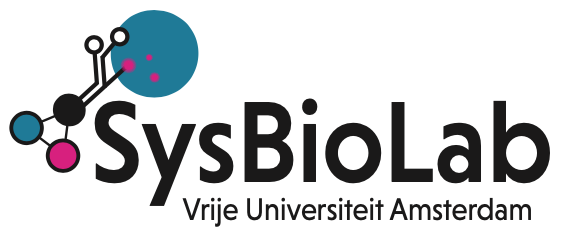On December 17th Timo Maarleveld defended his PhD entitled: “Fluxes and Fluctuations in Biochemical Models”. The committee comprised of prof Klaas Hellingwerf, prof Vitor Martins dos Santos, prof Pieter-Rein Tenwolde, prof Jaap Heringa and prof David Fell. Bas and Frank were promoter, Brett was co-promoter, his first time!
Month: December 2015
Standardizing constraint-based models: FBC version 1 published
Constraint-based modelling is a popular methodology used in systems biology whose stock in trade is the genome-scale model. However an ongoing problem in this field is that no formal standard exists for encoding such models. Brett Olivier together with Frank Bergmann have led the development of an extension to the Systems Biology Markup Language (SBML), a widely used format for encoding and exchanging mathematical models, that for the first time allows these models to be encoded and annotated in a standard way.
Version 1 of this extension, the SBML Level 3 Flux Balance Constraints (FBC) package has now been published.
BG Olivier, FT Bergmann, (2015) The Systems Biology Markup Language (SBML) Level 3 Package: Flux Balance Constraints, Journal of integrative bioinformatics 12 (2), 269
We organised an introductory systems biology course
As part of the BioSB Research School, which brings together bioinformaticians and systems biologists, we organised an introductory systems-biology course. In this course, we focussed on the basics of mathematical modelling of molecular circuits and the emergent properties of those circuits, such as their (in)stability, robustness and (in)sensitivity properties. We will organise a similar course next year; so keep an eye on the BioSB website to stay informed, or register for their mailing list.
Our time-lapse segmentation and tracking algorithm can now also track growing S. pombe
We have been hard at work developing an automated segmentation and tracking tool to analyse microscopic time-lapse movies of growing bacteria. After a few minor adjustments and additions we can now also segment and track fission yeast (Schizosaccharomyces pombe) growing on an agarose pad.
Our algorithm is now in its final stages of development and testing, and should be ready for release early next year.
Sam Seaver from Argonne National Laboratory visited the lab
Dr. Sam Seaver is bioinformatician at Argonne National Laboratory known from e.g. modelSEED and works on (automation of) metabolic reconstructions. He discussed with lab members and presented a seminar. Sam was on a tour through Europe and we were privileged enough to be on his tour list!

Recent Comments